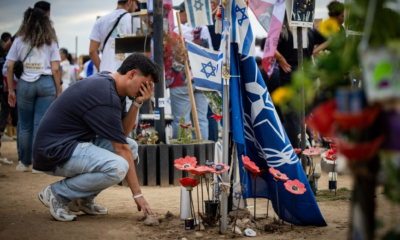
World

What we know about the hostage deal
JTA – When it attacked Israel on 7 October, killing 1 200 people and wounding thousands, Hamas also took an estimated 240 people hostage. Some of those captives are about to be released in a deal between Israel and Hamas.
The hostages range from Israeli soldiers to the elderly to small children. The deal finalised on Wednesday, 22 November, will free children, women, and some of the oldest hostages in exchange for women and youths held by Israel on national security charges, and will trigger a pause in the war between Israel and Hamas. It will be Israel’s first prisoner exchange with Hamas in more than a decade, and by far the largest in history.
Under the deal, 50 hostages will be released during the initial pause, about a dozen a day. Afterward, Hamas can extend the truce by releasing an additional 10 hostages a day. Up to 80 hostages could be released.
The first tranche of hostages to be released will include children held by Hamas – a number Israel estimates at 40. They include a 10-month-old baby and his four-year-old sister, Kfir and Ariel Bibas; Abigail Mor Idan, three, a United States citizen who is being held without anyone else in her family; Emily Hand, whose parents first believed her to be dead and who just turned nine in captivity; Erez and Sahar Kalderon, whose grandmother and cousin were murdered; and Yigal Yaakov, 13, who appeared in a hostage video released earlier this month.
Elderly women are also expected to be released as part of the deal.
About a month ago, Hamas released two women, aged 79 and 85, but the husband of one of them is still being held by Hamas. Hamas also released an American mother and daughter last month. Neither of those releases was subject to an agreement with Israel. Israel rescued one hostage, a soldier, on 30 October.
In addition, some of the hostages are known to have died after being taken captive. Others were severely injured before being abducted to Gaza. The condition and location of the remaining hostages may not easily be known. Even those who are alive could be hard to find in a region where the vast majority of people have been displaced since 7 October.
Some of the hostages are soldiers and don’t appear to be represented in the deal at all. It also appears that adult men who aren’t soldiers aren’t set for imminent release.
All those slated for release have Israeli citizenship. Perhaps dozens of the hostages are foreign nationals who were in Israel as guest workers.
Some hostages aren’t in Hamas’ control. Hostages were held by three different terrorist groups in Gaza: Hamas, Palestinian Islamic Jihad, and a smaller militia. Negotiations have involved only Hamas. According to Israeli reports, only 30 of the estimated 40 child hostages are being held by Hamas. The deal reportedly includes a guarantee that the Red Cross will be able to visit and provide medical care to the remaining hostages.
Israel will release 150 Palestinian women and teenage prisoners. That represents only a tiny fraction of the approximately 5 000 Palestinians held in Israeli prisons prior to 7 October.
Israel is also agreeing to pause its offensive in Gaza for at least four days. Israeli soldiers will remain in northern Gaza during the pause.
The number of trucks bringing in humanitarian aid during the pause will increase under the terms of the deal. Two weeks ago, Israel began allowing 100 trucks a day into Gaza, a goal the US had laid out. Under the deal, that number will increase to 200 a day.
Israel says it plans to resume fighting as soon as the pause expires. But a provision in the terms of the deal allows for its extension if Hamas releases more hostages – 10 freed captives for each additional day of calm.
A lot can happen during a pause in fighting: both sides can regroup, but there could also be continued talks that would lay the groundwork for a more lasting cessation of hostilities. Previous Israel-Hamas humanitarian pauses have also been broken, plunging both sides back into the fighting.










